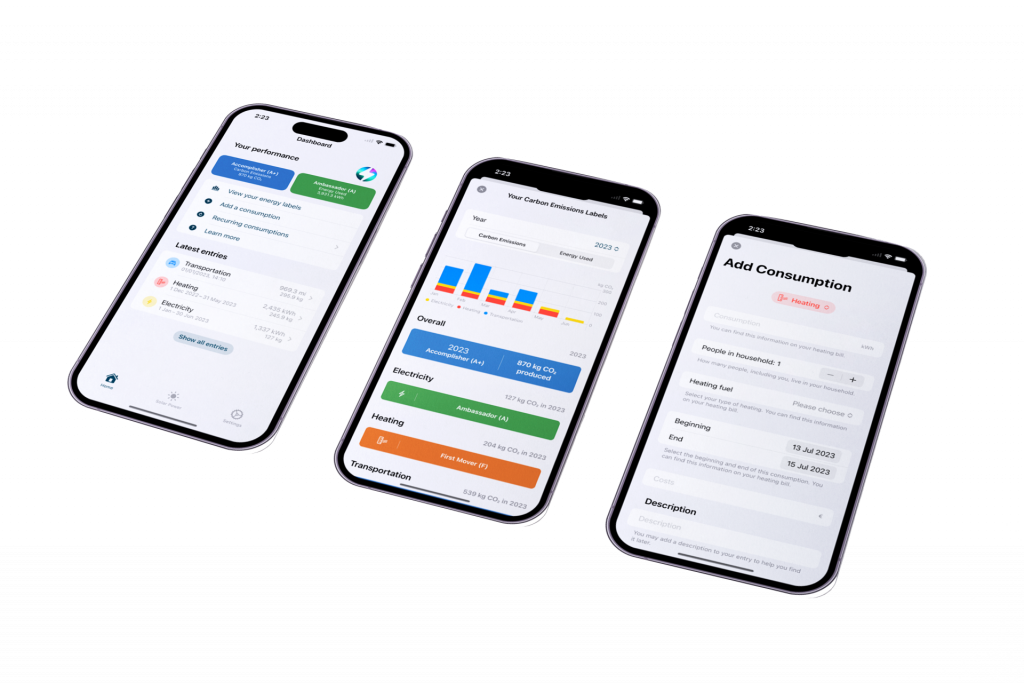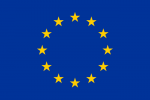Involving the community has been one of AURORA’s key objectives during the app development. Directly after conceptualising the mobile application (see “Conceptual challenges in developing the app”) the project involved potential users within the five demo-sites in a co-creation process. So-called “Innovation Cafés” were hosted in the five project locations, including Évora and Aarhus, to engage citizens as early as possible so that they could help guide the development of what would later become the “AURORA Energy Tracker”. During these co-creation events, AURORA representatives presented the concept of a personal energy tracker app to participants and asked them, using a standardised survey, about their expectations and opinions regarding certain functions. We collected and analysed 262 responses in total, each with a personal view on how features like tracking energy, heating, or transportation usage could best be implemented, in which way and how frequently users would generally want to receive reminders and notifications, and which devices they were using.
A detailed analysis of the results revealed that respondents were generally excited about the idea of the app in general and perfectly willing to enter their consumption data to monitor their usage behaviour. Both age and gender were well distributed across the sample, indicating a reasonably good representation of the target group of users, so the project decided to adopt the recommendations and specify a more detailed app development roadmap to start with the technical work on developing the app. This also required consideration for supported devices and operating systems, which had been determined to be iOS and Android, as respondents almost exclusively used these platforms. The survey even allowed us to determine the versions of the operating systems that we could expect users to have on their phones.

Development efforts commenced, and soon the first beta version of the app was available internally. This first version still lacked features such as the labelling system, recurring consumptions, and more, but it already allowed test users to enter consumptions and to see how the system would calculate emissions based on their data. To ensure the development team was heading in the right direction, an internal test was conducted whereby project partners downloaded the app on their devices and followed a testing protocol that guided them through all functions of the app systematically and asked for their feedback. This first round of testing was immensely helpful, as it revealed a few issues with the app, as expected, yet most importantly, confirmed that the system was already very much in line with what users were expecting, even in the current, incomplete state.
Over the next few weeks, the development team implemented more functionality, most importantly the labelling system. In close collaboration with the expert project partners on energy, the labelling system was integrated into the app and designed to dynamically adjust itself based on user data. Lots of fine-tuning and testing were required to meet all requirements. The app was then launched internally for yet another round of testing – this time much more polished and almost complete regardings its set of core features.
47 individual responses from project partners and general stakeholders, such as students, were collected in total across all tests. Some bigger and many minor issues were detected, and all of them have meanwhile been addressed. App testers reported great satisfaction with the user interface, the look and feel, the clarity of the user experience, and the overall usability of the app, which is precisely in line with the high-quality result AURORA envisioned at the start of the process: “It’s nice how it fits into the Apple and iOS ecosystem with its interface, and visually it’s really good.” Of course, there is yet more to come, such as the future integration of the AURORA solar power crowdfunding scheme, planned to be launched later in the project. For the time being, the app is available for both Android and iOS on Google Play and the Apple App Store respectively. It offers a host of features to track energy behaviour, improve personal energy labels, schedule reminders, and more.

Author:
Lars Lorenz
Institute for Science and Innovation Communication (inscico)
Germany



